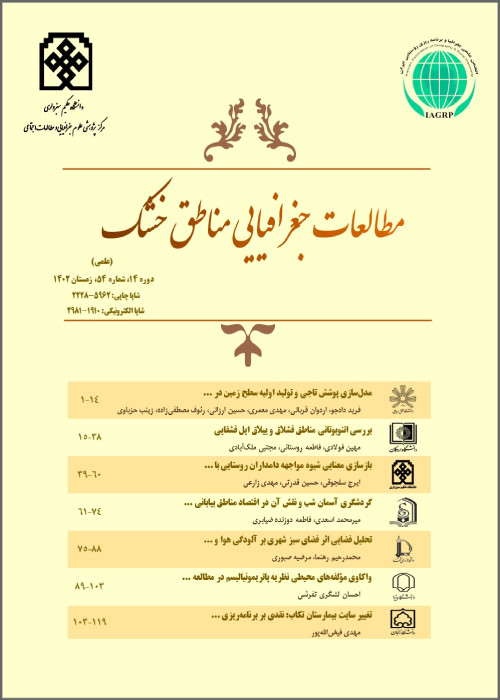Analysis of Khorramabad Motahari Karstic Springhead (Sarab) Recession Curve Based on Recession Coefficient during Hydro-Climatic Fluctuations
The hydrographic specifications of the karstic spring and the recession coefficient can reflect the hydro-climatic fluctuations and physical and geological characteristics of the aquifer system recharging the spring. In this study, in order to identify the hydrological geological behavior of Khorramabad Motahhari karstic Springhead (Sarab) during hydro-climatic fluctuations, quantitative analysis of recession curve based on Maillet exponential equation and coefficient of recession curve during wet years in a 27-year period (from 1991-92 to 2017-18) was calculated. To investigate the effect of hydrological fluctuations on the recession coefficient of Motahhari spring hydrograph, the changes in the time series of discharge coefficient during the base flow was analyzed by SDI hydrological drought index. Then, the statistical correlation of this index with evapotranspiration deficit index (SEDI) was analyzed to investigate the hydrological relationship and affectivity of the spring recession coefficient from climate fluctuations and biological changes. The results showed that the recession coefficient of Motahhari spring during the statistical period has an upward linear trend and its value has changed from 0.0081 to 0.0574 during mild and severe droughts, respectively. Statistical comparison of the time series of the recession coefficient of the mentioned spring with the values of SDI index showed that there is a significant inverse correlation with a negative coefficient of 65%. This means that with increasing hydrological drought of Motahhari spring and decreasing SDI values, the discharge coefficient of the spring increases and drainage takes place faster. Part of these changes is due to climatic and biological fluctuations. These effects were confirmed by the correlation between SDI and SEDI indices at a time scale of 6 months based on spectral analysis and cross-correlation at 95% confidence intervals. In addition, the spring recession coefficient can be influenced by the characteristics of Sarvak carbonate formation with limestone lithology and to some extent its fine-grained material. So, during droughts, the baseflow is affected by the conduit-flow and water stored in the body of the karstic aquifer and or due to large karst conduit and faults of Sarvak Formation, cause quickflow. In wet years, in addition to the rapid conduction of water by karstic conduits and fractures, probably recharged water from the Sarvak anticline flows into grained material with smaller pores consisting of calcareous material with a combination of sand and marl. These can cause high dynamic storage and low baseflow changes with a low hydraulic slope in dry months. In general, the results of this study give a comprehensive approach to karst spring management by predicting droughts and analyzing their drought coefficient.
- حق عضویت دریافتی صرف حمایت از نشریات عضو و نگهداری، تکمیل و توسعه مگیران میشود.
- پرداخت حق اشتراک و دانلود مقالات اجازه بازنشر آن در سایر رسانههای چاپی و دیجیتال را به کاربر نمیدهد.



